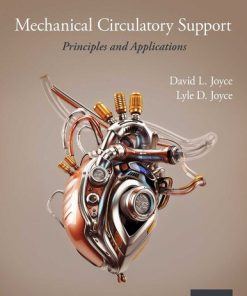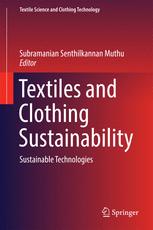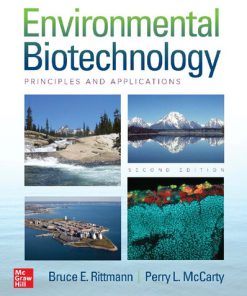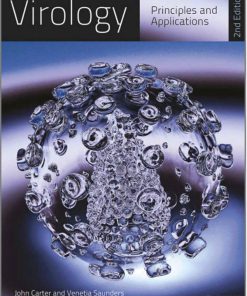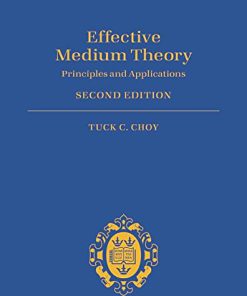Woven Textiles Principles Technologies and Applications 2nd by Kim L Gandhi 0081024983 9780081024973
$50.00 Original price was: $50.00.$25.00Current price is: $25.00.
Woven Textiles Principles Technologies and Applications 2nd by Kim L Gandhi – Ebook Instant Download/Delivery ISBN: 0081024983,9780081024973
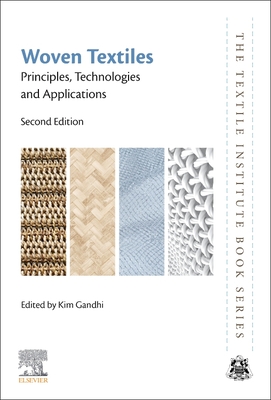
Product details:
Woven Textiles: Principles, Technologies and Applications, Second Edition, is an essential guide to woven textiles. This new edition is updated and expanded to include major new application areas, as well as the latest developments and innovations in terms of fibers, yarns, fabrics, machinery and technology. Sections cover fibers and yarns used for weaving, key preparatory techniques, the fundamentals of weaving technology, the characteristics of woven structures, the use of computer assisted design (CAD) systems, techniques for modelling the structure of woven fabrics, methods for the manufacture of 3D woven structures, and the application of woven textiles in a range of technologies.
With its distinguished editor and international team of expert contributors, this second edition will be an indispensable guide for all designers, engineers and technicians involved in the design, manufacture and use of woven textiles, as well as for academics and researchers in the field of textiles.
- Provides extensive coverage of woven textiles, including their preparation, manufacture, woven structures and characteristics
- Presents the latest technical applications of woven textiles, such as transportation, geotextiles, medical applications, sports and leisure, filtration, and composite structures
- Enables the reader to understand the latest technological advances in the area of woven textiles
Table of contents:
Part One: Yarns and weaving technology
1: Types and properties of fibres and yarns used in weaving
Abstract
1.1 Introduction
1.2 Types of natural and regenerated fibres
1.3 Types of synthetic fibres
1.4 Key fibre properties and how they are measured
1.5 Comparing fibre properties
1.6 New types of fibre
1.7 Yarns and their properties
1.8 Types of yarn for spinning
1.9 Short staple spinning yarns
1.10 Long staple spinning yarns
1.11 Physical properties of woven fabrics
1.12 Mechanical properties of woven fabrics
1.13 Effects of fibre and yarn properties on the use and application of woven fabrics
1.14 Effects of fibre and yarn properties on woven textiles: Apparel and sports textiles
1.15 Future trends
1.16 Sources of further information and advice
2: Yarn preparation for weaving: Winding
Abstract
2.1 Introduction to yarn preparation
2.2 The winding process
2.3 Types of winding machines
2.4 Terminology commonly used in the winding process
2.5 Cone types and build
2.6 Manual, semiautomatic, and fully automatic winding machines
2.7 Hazards from knots during weaving and knitting processes
2.8 Yarn splicing for knot-free yarns
2.9 Applications of splicing techniques
2.10 Developments in the yarn preparatory processes
2.11 Saurer Schlafhorst – Autoconer 6
2.12 SAVIO automatic winder Eco PulsarS
3: Yarn preparation for weaving: Warping
Abstract
3.1 Introduction
3.2 Direct warping
3.3 Indirect/sectional warping
3.4 Warping creels
3.5 Tensioning units of creels
3.6 Thread stop motion
3.7 Single-end warping machines
3.8 Newly designed single-end sample warper VMI 601
3.9 Developments in sectional and direct warping machines
3.10 Sectional warping machines
3.11 Lasertronic Plus sectional warping machine
3.12 COMSAT sectional warping machine UNI-EVO
3.13 Developments in direct warping machines
3.14 COMSAT direct warping machine – ‘UNI-EVO DIRECT’
3.15 Selvedge warper
3.16 T-Tech, direct warping machine – TW30F
3.17 Take-up tension indicator
3.18 Tension setting and control in increments of 1 N
3.19 Beam inertia compensator
4: Yarn preparation for weaving: Sizing
Abstract
4.1 Introduction
4.2 Characteristics of a good sized yarn
4.3 Size mixtures: Composition and quality
4.4 Effect of size on adhesion between fibres in the yarn structure
4.5 Size paste preparation: Cooking
4.6 Sizing machines
4.7 Yarn stretch during sizing
4.8 Automation controls of sizing machines
4.9 Developments in warp sizing
4.10 Karl Mayer sizing machine PROSIZE
4.11 Karl Mayer sizing machine ISOSIZE for staple fibres
4.12 Sizing machine TTS10S
4.13 Filament sizing machine TSE30F
5: The fundamentals of weaving technology
Abstract
5.1 Introduction
5.2 Primary loom mechanisms
5.3 Secondary loom mechanisms
5.4 Auxiliary loom mechanisms
5.5 Temples
5.6 Shedding mechanisms
5.7 Different types of shed
5.8 Classifications of plain and automatic shuttle looms
5.9 Drop box looms
5.10 Weft insertion on shuttle looms
5.11 Weft insertion on shuttle-less looms
5.12 Multiphase weaving
5.13 Developments in shuttle-less weaving machines
5.14 Developments in rapier looms
5.15 Developments in Dornier rapier weaving machine P1
5.16 Smit Textiles – Newly developed single rapier loom – ONE
5.17 Trinca rapier loom for weaving wide technical fabrics
5.18 Developments in air-jet looms
5.19 Developments in Dornier air-jet loom – A1
5.20 Developments in Tsudakoma air-jet loom
5.21 Developments in TOYOTA air-jet loom – JAT810
5.22 New concept – Air-jet loom for the production of leno fabrics
5.23 Developments in Tsudakoma water-jet loom
5.24 Maximum loom speeds and weft insertion rates exhibited at ITMA’s
Part Two: Woven structures
6: CAD/CAM in the woven textiles industry
Abstract
6.1 Introduction
6.2 The textiles industry and innovation
6.3 Some basic principles of CAD/CAM in the woven textile industry
6.4 CAD/CAM systems in the woven textiles industry
6.5 The role of CAD/CAM within the woven textile industry
6.6 Key issues in the use of CAD/CAM for the woven textile industry
6.7 New products/markets and future trends through CAD/CAM
6.8 Sources of further information and advice
7: Modelling the structure of woven fabrics
Abstract
7.1 Introduction: Fundamentals of woven structure
7.2 Fundamentals of design engineering
7.3 Designing of textile products
7.4 Design engineering using theoretical modelling
7.5 Modelling methodologies: Deterministic models
7.6 Modelling methodologies: Nondeterministic models
7.7 Authentication and testing of models
7.8 Reverse engineering
7.9 Future trends in nonconventional methods of design engineering
7.10 Conclusions
8: 3D woven fabrics, structures, and methods of manufacture
Abstract
Acknowledgements
8.1 Introduction: 3D woven fabrics and structures
8.2 Weaves
8.3 Manufacturing technologies
8.4 3D weaving calculations
8.5 Future trends and applications
Part Three: Applications of woven textiles
9: Woven textiles for automotive interiors and other transportation applications
Abstract
Acknowledgements
9.1 Introduction
9.2 Automotive applications of woven fabrics
9.3 Woven fabrics in car interiors
9.4 Fabric constructions and finishing processes
9.5 Other transport applications
9.6 Future trends
10: Woven apparel fabrics
Abstract
10.1 Introduction
10.2 Performance requirements
10.3 Types of woven apparel fabric
10.4 Practical design applications
10.5 Application examples
11: Woven textiles for medical applications
Abstract
11.1 Introduction
11.2 Application of woven textiles in managing acute and chronic wounds
11.3 Woven vascular prostheses and meshes
11.4 Application of woven structures in hospitals
11.5 Other medical applications of woven structures
11.6 Conclusions
12: Woven textiles for filtration
Abstract
12.1 Introduction
12.2 Applications of woven filter fabrics according to their structure
12.3 Application of woven fabrics for filtration in various industries
People also search:
You may also like…
Computers - Networking
Business & Economics - Others
Romance - Paranormal Romance
Biology and other natural sciences - Biotechnology
Environmental biotechnology : principles and applications 2nd Edition Perry L. Mccarty
Biology and other natural sciences - Virology




